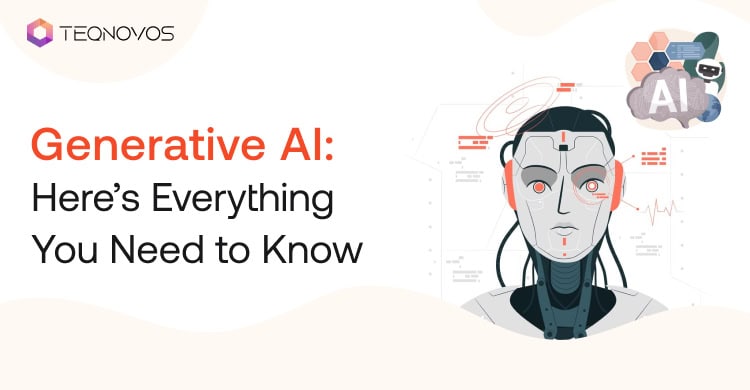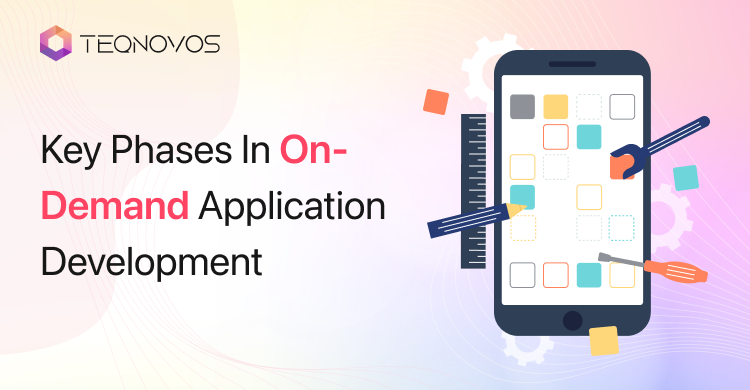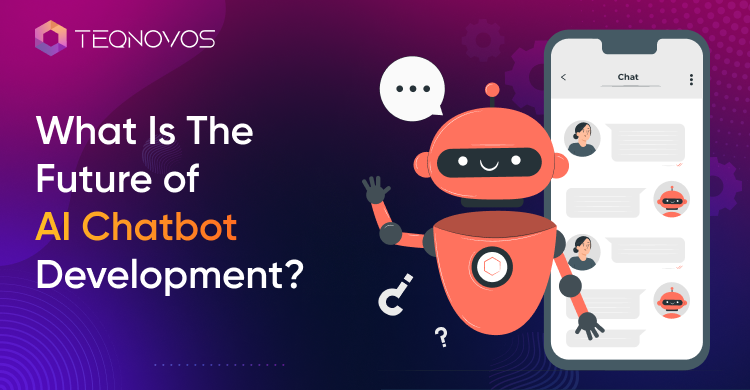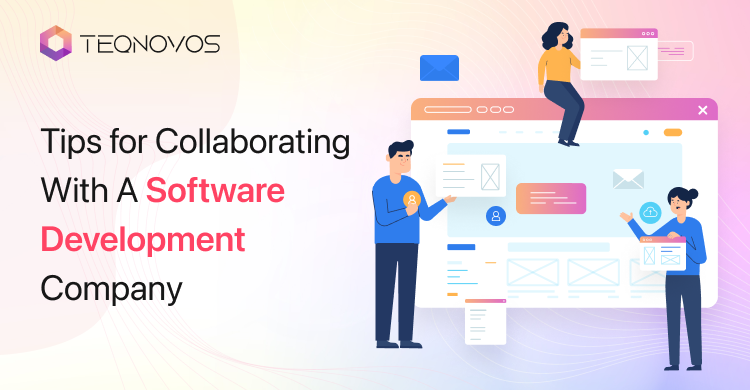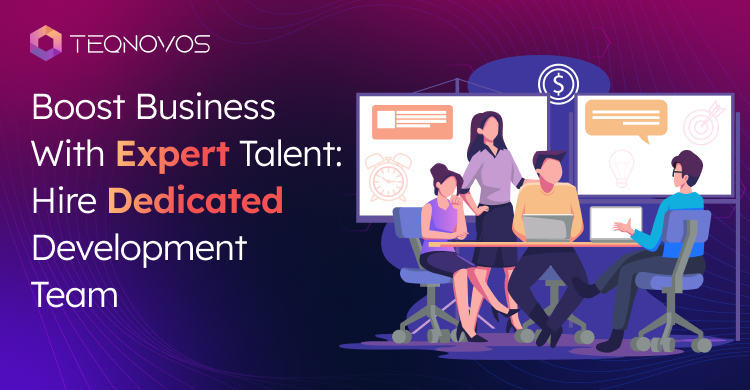Generative AI: Here’s Everything You Need to Know
When artificial intelligence technology became a reality, most tech enthusiasts agreed with its potential to change the world. Today, artificial intelligence has gained a supreme position in the tech world. From machine learning and deep learning to speech recognition, we have already witnessed AI giving rise to several other futuristic technologies. Generative AI is one such technology backed by the fundamentals of artificial intelligence.
Currently, generative artificial intelligence has gained widespread recognition, especially due to the instant success of ChatGPT – a Generative AI tool. Most businesses across the world have already joined the race of exploiting AI technology to streamline their operations and automate various processes. Generative AI has brought an all-new way of achieving operational excellence that businesses want to leverage.
If you want to get a deep understanding of Generative artificial intelligence and learn how it opens up new opportunities to grow your business, this blog post is for you. So, let’s get started!
What is Generative AI?
Generative AI is a form of artificial intelligence capable of producing different types of content, such as text, images, audio, videos, and animations.
It uses specific algorithms and models to generate content inspired by the training data. A stream of data is fed to a generative AI model for training purposes. By analyzing the patterns and structure in the training data, generative AI comes up with new and realistic data.
One particular thing to note about generative AI is that it mainly uses large language models (LLMs) to generate content. LLMs are variants of machine learning models designed to process very large datasets and produce content with characteristics similar to the training data.
Several LLMs out there serve as the cornerstone for the development of Generative AI tools. For instance, ChatGPT makes use of GPT-3 as its foundation model to generate text content. Similarly, there are several advanced generative AI algorithms and models for generating images from text, such as DALL-E and Stable Diffusion.
History of Generative AI
Before we move ahead to discuss the workings and applications of generative AI, let’s take a look at how generative AI came into existence and evolved.
Deep learning is the basis of generative AI, which dates back to the 1950s. However, the breakthrough that laid the foundation for generative AI is the invention of Eliza – a chatbot developed in the 1960s. However, Eliza as a chatbot was quite ineffective compared to the chatbots that we interact with today.
Over the years, advancements in neural networks and deep learning have fueled the growth of Generative AI. In 2010, the development of various models for natural language processing, and image classification further laid the groundwork for generative AI.
Here are some of the key events that shaped the development of Generative AI.
2014
A research scientist named Ian Goodfellow developed GANs or generative adversarial networks. A GAN network combines two neural networks that compete with each other to generate realistic content.
2017
The development of an all-new deep learning architecture by the Google Team, called Transformer, became a breakthrough in generative AI technology. By using the Transformer network, it became possible to train large language models (LLMs). As a result, it eventually facilitated the development of GPT and GPT-2 in 2018 and 2019, respectively.
2021
The release of DALL-E by OpenAI became the center of attention due to its ability to generate images from text. The development of such powerful generative AI models capable of developing images from text prompts is followed by Midjourney and Stable Diffusion.
2023
This year witnessed the release of GPT-4 by OpenAI and Bard by Google. Moreover, Microsoft integrated ChatGPT with Bing.
How Does Generative Artificial Intelligence Work?
While generative AI is a complicated technology that relies heavily on a complex computing process, its basic functioning is simple and easy to understand. To start with, generative AI models leverage advanced neural networks that analyze large datasets to find patterns and structures that act as the base for generating new data.
In general, we interact with generative AI programs through prompts that are mostly in textual form, but it could be an image, video, or many other types of inputs as well. The algorithms then generate content based on their capabilities.
One particular thing to note is that generative artificial intelligence models become better every time they receive and generate data. In other words, such models keep on improving with every interaction.
General AI vs Generative AI
While we are discussing generative AI, you may wonder if it’s different from general AI, and if yes, how?
When it comes to general AI or simply AI, it collectively refers to a field that aims to develop human-like intelligence in machines. Machine learning, deep learning, cognitive computing, robotics, etc. are all part of general AI.
Generative AI, on the other hand, is a specialized area of artificial intelligence that deals with the generation of new and original content. It relies on large datasets for training and identification of patterns. This type of AI aims to create a variety of content quickly that usually takes a great deal of time when done by humans.
Applications of Generative AI
Depending on the type of content produced, there are different applications of generative artificial intelligence. Let’s discuss them below.
1. Text Generation
If we talk about text generation, it is currently the most advanced and successful domain of generative AI. Platforms like ChatGPT are capable of generating responses for prompts in the form of text. You can use such platforms to produce a variety of content such as articles, summaries of articles, social media posts content, website content, etc.
Trained on large datasets, text generation systems create unique content that is relevant to the user prompts. The extensive capabilities of text-generative AI platforms also include text completion, content rephrasing, human-like discussions, etc.
The use of natural language processing (NLP) makes it possible for AI-based text-generation tools to understand user inputs clearly and generate accurate responses.
2. Image Generation
The creation of images from text inputs is yet another popular application of generative artificial intelligence. Text-to-image AI tools produce creative yet realistic images. Further, they can create 3D images, avatars, and various types of illustrations. Apart from generating images from scratch, it’s also possible to take advantage of generative AI to modify existing images.
Many image-generating AI tools help users with tasks such as image manipulation, image enhancement, and image completion. DALL-E and Midjourney are two highly popular platforms that let you create images from simple text prompts.
3. Audio Generation
Generative artificial intelligence encompasses audio generation and enhancement. Producing audio using text or another audio piece unlocks a whole new world of possibilities. With audio generation AI technology, it becomes fairly easy to create music across different genres.
By identifying the patterns in the input music files, an audio generator platform creates new music compositions. However, feeding copyrighted music as input poses the threat of copyright infringement.
Other than music production, audio-generative AI facilitates text-to-speech and speech-to-speech conversion. Transforming a text piece into a speech and changing the tone, pitch, and voice of a speech comes in handy for professionals working in industries like gaming and entertainment.
4. Video Generation
Video creation is a tedious process that requires a significant amount of effort. Generative AI makes the lives of creators easy by simplifying the video creation process. Whether it’s about composing a video, adding special effects or animation, or enhancing the resolution, generative AI facilitates the development of high-quality videos.
With AI-powered video tools, you can create videos right from scratch without the need for devices like cameras and microphones. Moreover, you can rely on such tools to create a video that has a style similar to that of a reference video.
5. Code Generation
The potential to generate code is what makes generative artificial intelligence a lucrative technology for the software industry. The automation of various aspects of the software development process helps to build software quickly. Moreover, AI-generated code is expected to have fewer errors compared to code written manually.
By translating normal text prompts into code, generative AI saves a lot of time when developing software. Besides, generative AI even helps developers become more productive by offering features like code completion, automatic bug detection and fixes, and test case generation.
6. Synthetic Data Generation
Synthetic data comes in handy for training AI models, especially when there’s limited access to real data. Generating synthetic data and feeding it to an AI model for training is a great way to improve the overall accuracy of the model.
With the unavailability of data, enterprises can leverage synthetic data to train different AI models. This will save both the time and resources required to collect large quantities of data.
How Generative AI is Being Used By Businesses?
Generative artificial intelligence is one such technology that is going to affect several industries, including marketing, finance, natural sciences, entertainment, and automotive. When used in the right way, this new AI technology will help businesses solve various complex problems.
While each industry uses generative artificial intelligence differently, the following are some common advantages that businesses from different industries get:
- Generating content and ideas using an AI system will save time for employees. They can use the AI-produced content to create further content and derive more ideas. Employees can use their time to complete other tasks and become more productive by acting on ideas rather than thinking about them.
- Businesses can utilize generative AI to create personalized content and interactions that ultimately improve the customer experience.
- Generative AI finds patterns and relations between data that help to identify areas of innovation. Therefore, R&D departments can leverage this technology to speed up their research and get better results.
- Whether it’s a marketing strategy or a new business model, it’s possible to generate information that can help businesses make better decisions.
While the aforementioned are the generic benefits that businesses get, let’s discuss how generative AI can revolutionize different industries.
1. Marketing
Marketing is among the top industries that get the most benefits from generative artificial intelligence. From producing articles, blog posts, and marketing copies to carrying out market research, there are several tasks that marketing companies can perform with ease.
2. Finance
In the finance industry, generative artificial intelligence can play a critical role by analyzing large amounts of market and customer data to give personalized investment ideas and financial services recommendations. Moreover, by producing synthetic data, it is possible to identify any potential threats and design more potent fraud detection systems.
3. Pharmaceutical
For the pharmaceutical industry, generative artificial intelligence models can create synthetic data that helps to discover new drugs. AI-generated data not only makes the drug discovery process faster but also brings down the costs significantly.
4. Gaming
Gaming companies can generate different types of visual content that aids in game development, such as environments and lifelike characters. Furthermore, it’s feasible to produce visual effects and game mechanics.
5. Entertainment
The media and entertainment industry sees various generative artificial intelligence applications, with the primary being content creation. Stories, scripts, and ad copies are some forms of content that generative AI can produce for entertainment companies.
6. Manufacturing
Generative AI empowers the manufacturing industry by facilitating predictive maintenance. Eventually, it will help to reduce the occurrence of mechanical defects and manufacturing downtime. Additionally, optimized production processes, reduced wastage, and better product quality are more benefits that manufacturing businesses enjoy.
Limitations of Generative AI
Generative AI is still in its infancy and has a few limitations that must know about. Take a look at those limitations below.
1. Low Accuracy
Some of the generative AI systems available today are not fully accurate as they sometimes produce inaccurate output. Thus, users can not completely rely on the information or data delivered by these generative AI tools. It’s essential to evaluate the appropriateness and accuracy of any piece of information before using it in any way.
2. Source of Information
While you get information on a wide array of topics, it’s impractical to identify the source of information provided by a generative AI tool. With almost little to no details about the source, it’s become difficult to assess the authenticity of a piece of information.
3. Risk of Bias
The output of a system is supposed to be free from any bias. This is the only way to ensure the delivery of genuine information that has a neutral point of view. However, present-day generative artificial intelligence systems might come with the risk of producing biased output or information.
How to Overcome the Limitations of Generative Artificial Intelligence?
Just like any modern technology, generative AI has its share of limitations. But the sooner you realize that these limitations can be contained, the more beneficial it will be for you.
You must understand that the outputs you receive through a generative artificial intelligence tool are only as good as the input. So, make sure you enter precise prompts on the tool based on what outcome you are hoping to achieve. This will reduce the chances of inaccuracy in the content.
Further, you must keep in mind that generative artificial intelligence is here to offer support for your business processes and not replace human expertise altogether. Therefore, you need to be vigilant about the information you receive through these tools before using them for different purposes.
With the pace at which the generative artificial intelligence industry is progressing, it won’t be too long before these limitations will be eliminated as well.
What is the Future of Generative AI?
After the massive success of ChatGPT, the future of generative AI seems highly promising. As discussed above, there are several generative AI applications across different industries. They indicate the usefulness and potential of generative AI to transform the world.
Generative AI is beyond ChatGPT as several other tools allow the creation of images, videos, code, and other types of content. If we talk about image-based AI tools, we already have a few powerful image generators, including DALL-E 2 and Midjourney. Besides, many companies are working continuously to develop more powerful LLMs for generative AI tools.
The utility of generative AI is for businesses of almost any size, ranging from SMBs to large enterprises. By using generative AI apps, enterprises can automate several tasks and improve their overall efficiency. Enterprise generative AI is probably going to be the center of attention in the coming years as large companies will aim to get a competitive edge by leveraging generative AI tools.
As businesses are highly interested in the real-world applications of generative AI, we are likely to witness significant improvements and widespread adoption in the coming years. Furthermore, it will trigger an increase in the number of generative AI jobs. Professionals with specialized knowledge of this domain will be in high demand.
Bottom Line
While generative AI has been under development for quite some time now, it is ChatGPT that helped the technology become popular and gain massive acceptance. The ability to generate a wide range of content instantly makes generative AI a technology that businesses operating in different industries want to exploit.
The applications of generative artificial intelligence in different industries make it a complete game-changer. Not only businesses can automate processes but also boost their operational efficiency using generative AI tools. So, reach out to a reliable generative AI development company to reap the maximum benefits of this latest artificial intelligence tech.
Being a new technology, there are several limitations of generative AI that we need to address. However, many of these limitations will likely cease to exist in the future as companies are working on the development of new and more powerful generative AI models.
Frequently Asked Questions
1. Why is generative AI so popular?
Generative AI is a form of artificial intelligence capable of producing different types of content, including text, images, videos, and code. The best thing about this technology is its ability to generate content with minimum user input.
Generative artificial intelligence models process huge amounts of training data to identify patterns and structures required to create new content. From articles to images and animations, generative AI can produce content to reduce human efforts and enable automation.
2. Is generative AI the future?
Generative artificial intelligence has the potential to transform several industries, ranging from healthcare to finance. Whether it’s about automation of tasks, generating personalized and creative content, or producing test data, generative artificial intelligence can do it all. And, this can help companies become more efficient.
3. What problems can generative AI solve?
There are several real-world problems that generative AI tools can solve, such as content creation, data analysis, and research. Moreover, it can help companies reduce overall dependency on human resources, eliminate bottlenecks, and maintain consistency. In general, it can solve various problems across different industries.
4. Which industries will be most impacted by generative AI?
Several industries are already utilizing generative artificial intelligence to streamline their processes, such as automotive, defense, and electronics. However, the industries that seem to make the out of the potential of generative artificial intelligence in the coming years include marketing, pharmaceutical, software, and manufacturing. These industries can easily exploit the capabilities of generative AI tools to boost their productivity.










